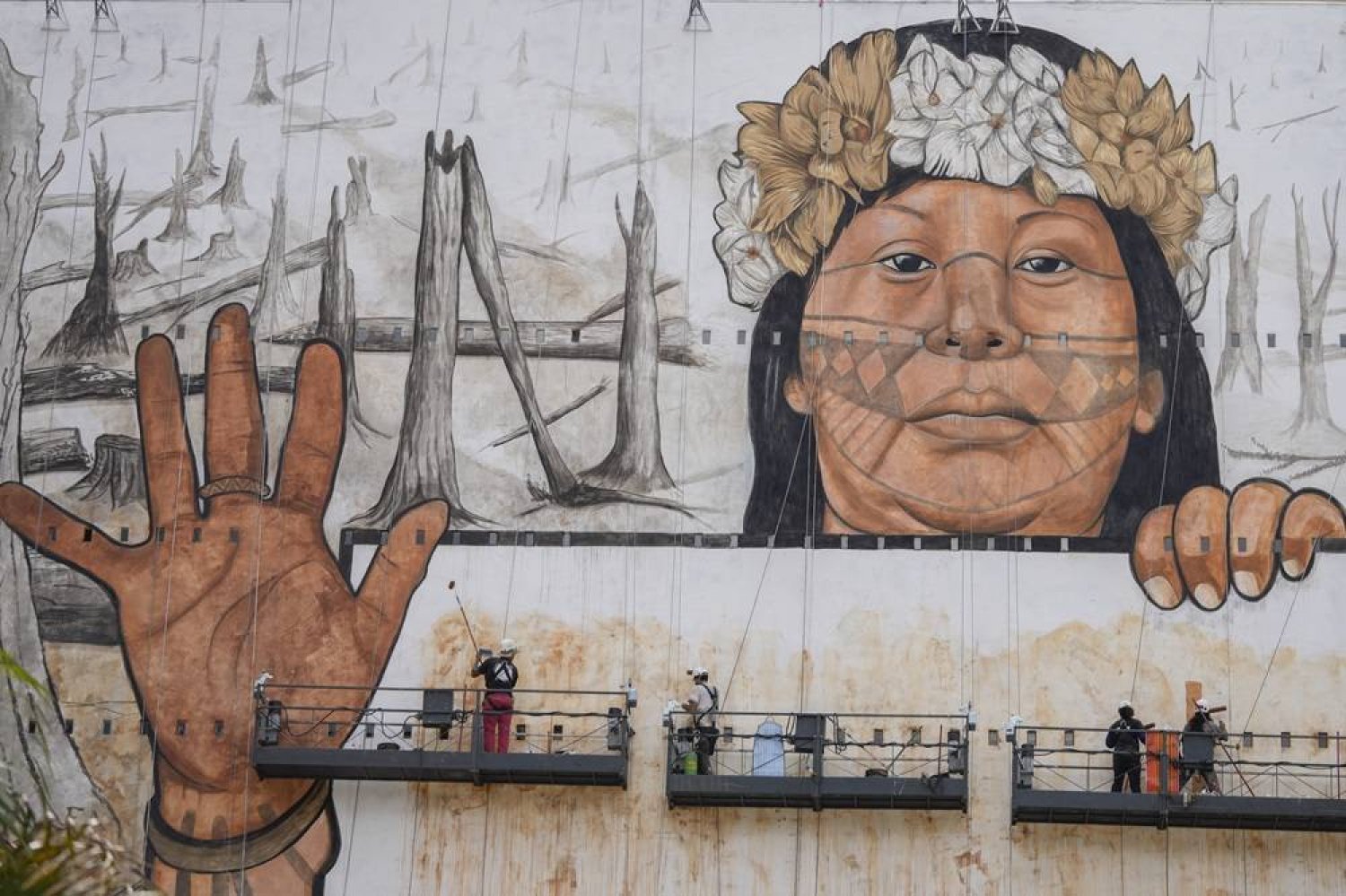Brazilian street artist Mundano has unveiled a striking new mural in São Paulo, incorporating ash from forest fires and mud from recent floods in Brazil to send a powerful message against deforestation. The mural, located on the side of an 11-story building in the heart of Latin America’s largest city, adds to São Paulo’s vibrant street art scene with its poignant environmental theme.
The 48-meter by 30-meter mural depicts the charred remains of a forest and the face of Indigenous leader Alessandra Korap Munduruku, who successfully campaigned against multinational mining companies seeking to exploit her tribe’s ancestral lands in the Amazon. Munduruku, who was awarded the Goldman Environmental Prize in 2023, is shown holding a sign that reads, “Stop the Destruction.” This mural aims to raise awareness of the ongoing environmental crisis in Brazil, particularly the destruction of the Amazon rainforest.
Mundano’s choice of materials is as symbolic as the artwork itself. The mural was painted using colors made from ash collected from forest fires in Brazil, including from the Amazon, which has been ravaged by fires during the worst drought on record. In addition, mud from recent devastating floods in southern Brazil was incorporated into the artwork, reflecting the country’s increasing vulnerability to climate disasters.
The mural is also a direct protest against large-scale agricultural practices that have expanded into the Amazon, such as soy farming and cattle ranching, which have contributed significantly to deforestation. In particular, Mundano temporarily included the names of the Cargill family, owners of U.S. grain giant Cargill Inc, on the mural to call attention to their role in the agricultural supply chain. The artist’s intention is to hold Cargill accountable for its commitment to eliminate deforestation from its Brazilian supply chain by 2025.
Mundano further used clay from Indigenous territories where land rights are frequently contested, and urucum, a red fruit traditionally used as body paint by Amazon tribes, to create the natural pigments for the mural. “This is likely the largest mural ever made with natural pigments,” Mundano stated, highlighting the significance of his work both artistically and environmentally.
The project was created in collaboration with the conservation organization Stand.earth, which funded the mural as part of a broader initiative to raise awareness about the environmental and social impact of deforestation and the global climate emergency.
READ MORE:
